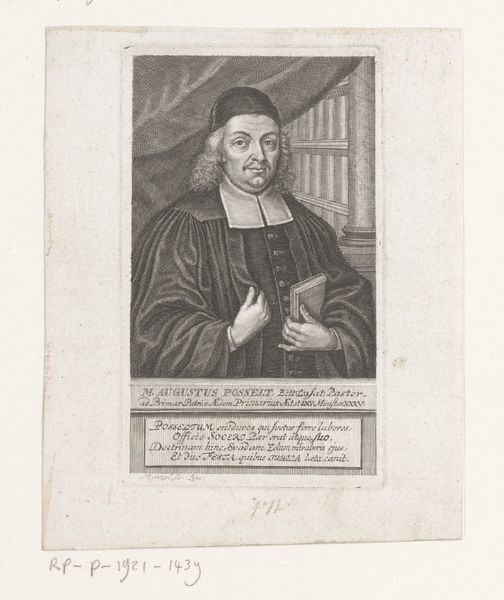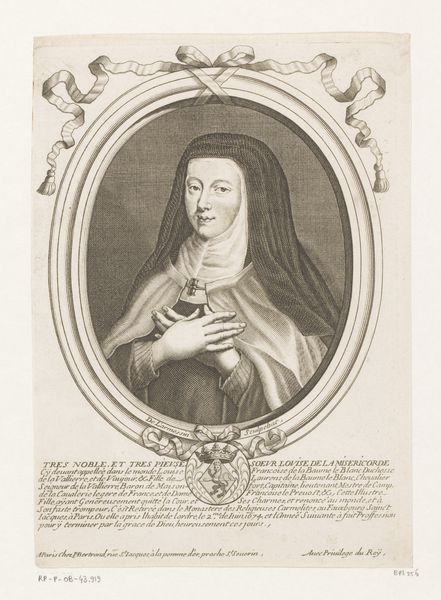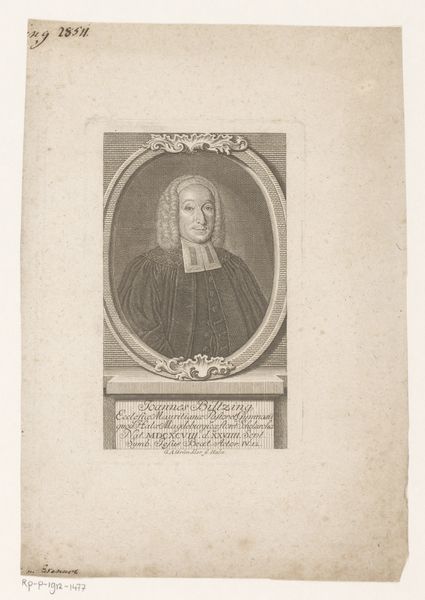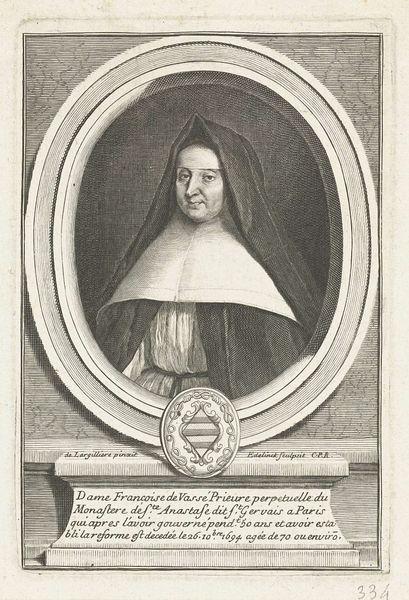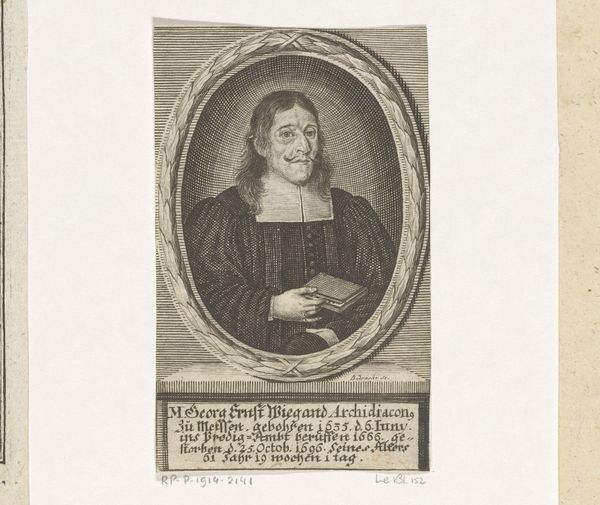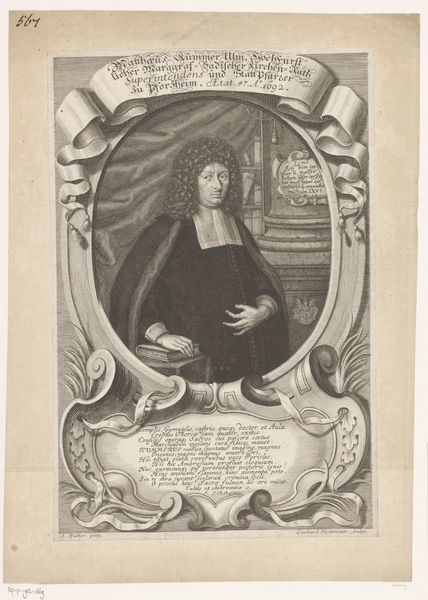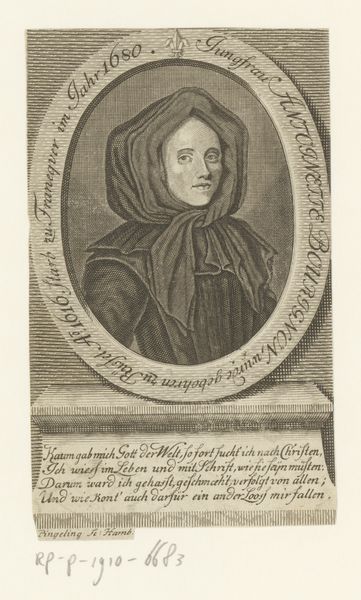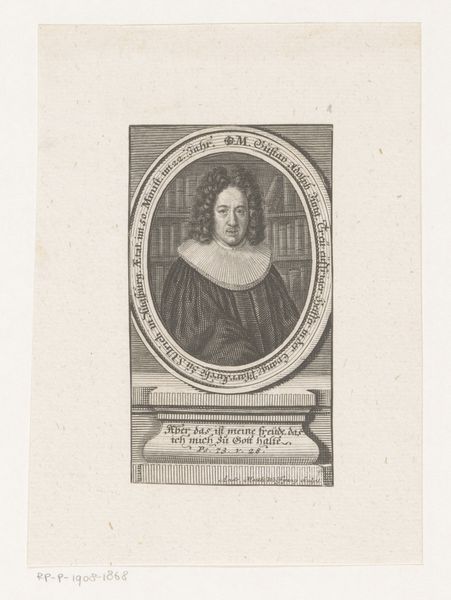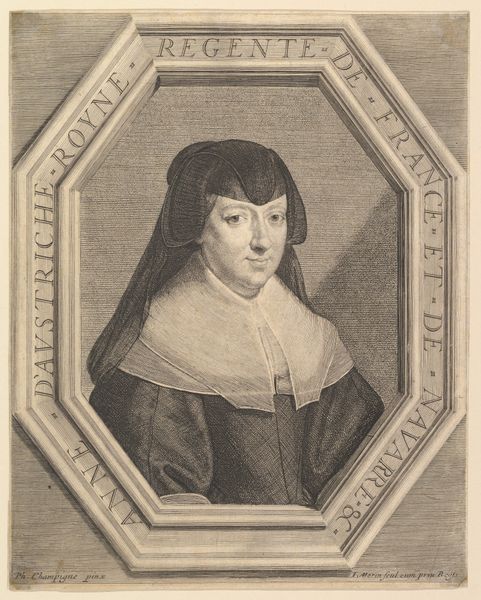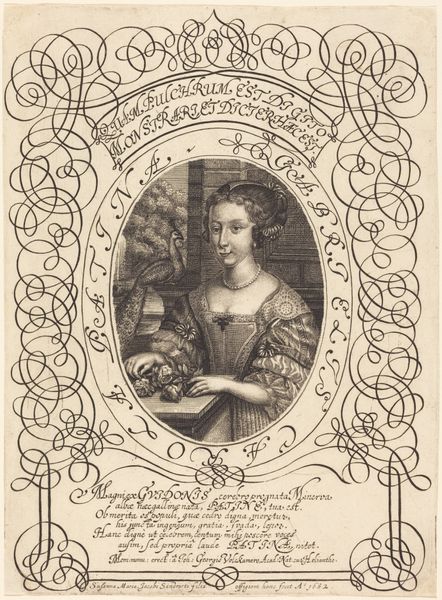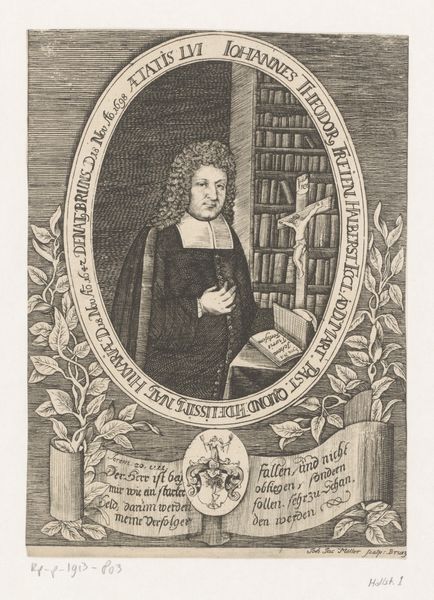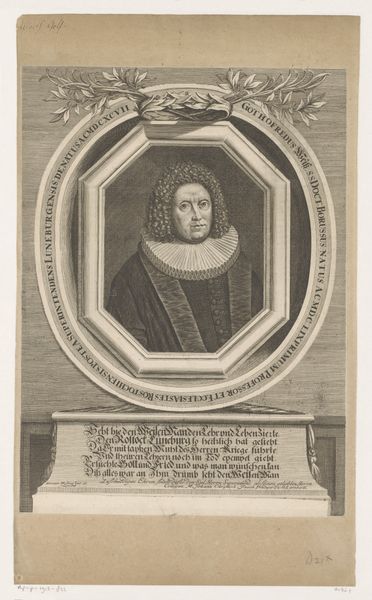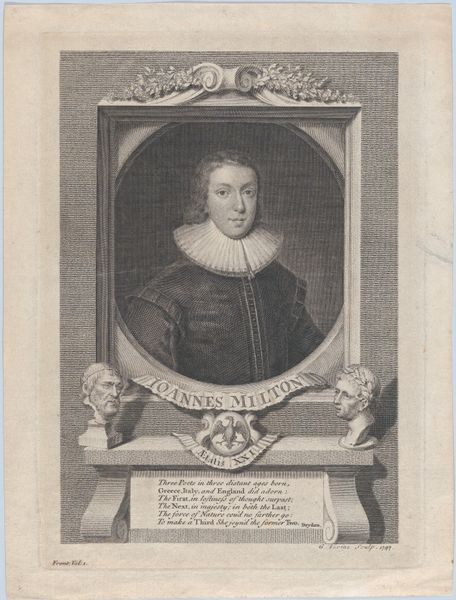
print, intaglio, engraving
#
portrait
#
baroque
# print
#
intaglio
#
engraving
Dimensions: height 193 mm, width 159 mm
Copyright: Rijks Museum: Open Domain
Curator: Standing before us is a fascinating engraving titled "Portret van Johann Reinhard" made sometime between 1678 and 1709. It's currently held here at the Rijksmuseum. What's your initial take on it? Editor: The formality is intense. The sitter's rigid posture, the heavy framing – it all feels very…constructed. Almost as if we are seeing an assertion of status, and maybe a negotiation of religious power. Curator: Absolutely. Considering that it’s a print, likely produced multiple times, this image becomes part of a visual language asserting power. The printmaking process— the labor of engraving the lines into a metal plate, the decisions about composition to ensure effective reproduction—these are all significant in disseminating this portrayal of Johann Reinhard. Editor: And the very act of commissioning and distributing his likeness signals his importance within the religious and social structures of the time. I notice the inscription at the bottom; that text, presented so prominently, further cements his doctrine. It asks what should be believed, done, or avoided, suggesting that Reinhard is the person who provides the answers to these fundamental questions. Curator: The level of detail achieved through the intaglio method – that is, incising the design into the plate – gives a rich texture to the sitter’s robes and hair, almost implying wealth and power. We should remember that making these types of images was expensive and highly skilled. Editor: Right, this isn’t just about Reinhard; it’s about what he represents. It's intriguing to consider the artist, Johann Christoph Boecklin's intention, and to contextualize the portrait in the religious struggles and societal tensions of the 17th century. How the choice to depict him amidst such rich ornamental Baroque design speaks to religious tensions during this era and signals a man of notable spiritual authority, a visual representation of hierarchy. Curator: Examining the different types of paper used, analyzing ink compositions, understanding distribution networks... all those material facts really help to clarify the historical weight of this image. This object wasn't made in isolation. It functioned as part of a wider economy. Editor: Agreed. The Baroque elements create a visual experience aimed to invoke certain feelings in the audience—perhaps awe or submission, which allows us to consider its power in shaping the societal dynamics and power relations in his world. Curator: Thinking about the processes behind it really puts a sharp focus on those relationships. Editor: Indeed. This piece certainly invites deeper thought on representation and its social function in its time. Curator: Yes, it's a material testament to very complex societal power dynamics.
Comments
No comments
Be the first to comment and join the conversation on the ultimate creative platform.
